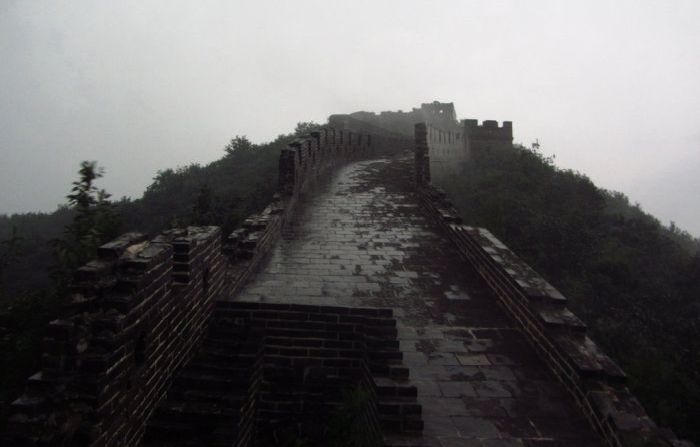|
|
Great Wall Of China, Huanghuacheng, Jiuduhe, Huairou District, Beijing, China
|
The North African traveler Ibn Battuta, who was in Guangzhou ca. 1346, inquired among the local Muslims about the wall that, according to the Qur'an, Dhul-Qarnayn had built to contain Gog and Magog. Ibn Battuta reported that the wall was "sixty days' travel" from the city of Zeitun (Quanzhou); Hamilton Alexander Rosskeen Gibb noted Ibn Battuta has confused the Great Wall of China with that built by Dhul-Qarnayn. This indicated that Arabs may have heard about China's Great Wall during earlier periods of China's history, and associated it with the Gog and Magog wall of the Qur'an. But, in any event, no one of Ibn Battuta's Guangzhou interlocutors had seen the wall or knew anyone who had seen it, which implies that by the late Yuan the existence of the Great Wall was not in the people's living memory, at least not in the Muslim communities in Guangzhou.
Soon after Europeans reached the Ming China in the early 16th century, accounts of the Great Wall started to circulate in Europe, even though no European was to see it with his own eyes for another century. Possibly one of the earliest descriptions of the wall, and its significance for the defense of the country against the "Tartars" (i.e. Mongols), may be the one contained in the Third Década of João de Barros' Asia (published 1563). Interestingly, Barros himself did not travel to Asia, but was able to use Chinese books brought to Lisbon by Portuguese traders. Other early accounts in Western sources include those of Gaspar da Cruz, Bento de Goes, Matteo Ricci, and Bishop Juan González de Mendoza. In 1559, in his work "A Treatise of China and the Adjoyning Regions," Gaspar da Cruz offers an early discussion of the Great Wall in which he notes, “a Wall of an hundred leagues in length. And some will affirme to bee more than a hundred leagues.” Another early account written by Bishop Juan González de Mendoza (translated into English in 1588) reported a wall five hundred leagues long, but suggested that only one hundred leagues were manmade with the rest natural rock formations. In another early Western account, Louis J. Gallagher’s translations (published in 1953) of the journals of the famous Jesuit Matteo Ricci (1552–1610) show that Ricci mentioned the Great Wall once in his diary, noting the existence of “a tremendous wall four hundred and five miles long” that formed part of the northern defenses of the Ming Empire. In yet another case, Ivan Petlin’s 1619 deposition for his Russian embassy mission offers an early account based on a firsthand encounter with the Great Wall, and mentions that in the course of his journey his embassy travelled alongside the Great Wall for ten days. One of the earliest records of a Western traveler entering China via a Great Wall pass (Jiayuguan, in this case) may be that of the Portuguese Jesuit brother Bento de Góis, who had reached China's north-western gate from India in 1605.
|
|









